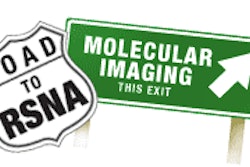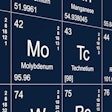
PET studies of the abdomen and pelvis have the potential for identifying and staging a variety of malignancies. Trying to image this area utilizing F-18 FDG, the only radiopharmaceutical reimbursed in the U.S. for noncardiac PET, is compromised by its accumulation in the gastrointestinal tract and urinary tracer activity.
A multidisciplinary group of researchers from the Centre Hospitalier Universitaire Vaudois in Lausanne, Switzerland, has developed a procedure to overcome this limitation -- forced diuresis with parenteral hydration.
"The high accuracy of F-18 FDG-PET in detecting many malignant and inflammatory disorders of the abdomen and pelvis may be reduced by physiologic F-18 FDG excretion along the urinary system. Continuous efforts have been devoted to overcoming this limitation inherent in F-18 FDG-PET," wrote the authors in a study published in the Journal of Nuclear Medicine (November 2006, Vol. 47:11, pp. 1803-1807).
The researchers conducted a prospective study of 32 patients, 23 men and nine women between 35 to 79 years old with a mean age of 66, between February 2004 and November 2005. The patients presented with various malignancies for staging or restaging, including bladder cancer, gynecologic tumors, gastrointestinal tumors, testicular cancer, renal cell carcinoma, and poorly differentiated prostate cancer. The researchers noted that patients with known cardiac decompensation or obstructive uropathy were excluded from the study.
"The primary inclusion criteria were the presence of known intravesical tumors or undefined renal lesions on the initial PET scan and the appearance of indeterminate or equivocal F-18 FDG-accumulating lesions along or near the course of the urinary tract or in the renal parenchyma," the authors wrote.
 |
| A 69-year-old man with papillary bladder cancer. (A) Coronal prediuretic F-18 FDG-PET image shows complete masking of primary tumor by urinary activity. (B) Transaxial postdiuretic F-18 FDG-PET image after two voidings of urinary bladder shows equivocal finding. (C and D) Transaxial postdiuretic F-18 FDG-PET after three voidings (C) and correlative MRI (D) reveal T1 tumor in left lateral wall of bladder (arrows). Copyright © by the Society of Nuclear Medicine Inc. |
The study cohort was imaged on an Advance NXi PET scanner (GE Healthcare, Chalfont St. Giles, U.K.) or Discovery LS (GE) PET/CT system. All patients fasted for a minimum of six hours prior to injection of FDG (5.25 MBq/kg of body weight) and rested for an average of 57 minutes postinjection. Each patient drank between 0.5 and 1 liter of water during the uptake phase of FDG and voided the bladder frequently prior to their initial scan, which was from the pelvic floor to the head.
After the initial scan, each patient then received 0.5 mg/kg (maximum of 40 mg) of furosemide (Lasix, Abbott Laboratories, Abbott Park, IL) followed by an IV infusion of 500 mL of physiologic saline over approximately 30 minutes. During this infusion, the researchers reported that the patients drank 400 mL of water and were then asked to void the bladder.
Two or three abdominopelvic cradle positions were then acquired on PET or PET/CT with the length of the second acquisition dependent on either the patient's clinical findings or the prediuretic PET findings. The acquisition time on the postdiuretic PET scans ranged between 14-21 minutes and the postdiuretic PET/CT scans were conducted in nine to 13 minutes.
The PET exams were interpreted in consensus by two board-certified nuclear medicine physicians, while the PET/CT exams were interpreted in consensus by a board-certified nuclear medicine physician and a board-certified radiologist.
The results the scientists achieved with their protocol were very impressive.
"Forced diuresis coupled with parenteral hydration eliminated any significant F-18 FDG activity from the urinary bladder and both ureters in 31 (97%) of 32 patients," they wrote.
Equally significant was their finding that three successive voidings of the bladder was sufficient to reduce the urinary activity to a background level without the need for a catheter to evacuate or irrigate the bladder. In addition, the patients tolerated the procedure very well with no untoward effect reported in the form of hypotension, allergic reaction, or fluid overload for the entire cohort.
The protocol proved very effective for FDG-PET imaging of primary bladder cancer. The researchers reported clearly visualizing nine primary and two recurrent bladder tumors after discarding the residual F-18 FDG urinary activity.
In a group of patients who were re-examined because of indeterminate or equivocal extravesical lesions, the scientist found that seven suggestive foci were deemed of no clinical significance because they were washed away from the second acquisition by virtue of forced diuresis.
"This effect can certainly alleviate the need for a further diagnostic workup to prove or disprove such types of F-18 FDG-PET or PET/CT findings," they noted.
Seven foci persisted in this group, and the team found two that corresponded to recurrent cervical or endometrial carcinoma, which they suggested might have been missed if forced diuresis had not been applied.
 |
| (A and B) Transaxial (A) and sagittal (B) prediuretic F-18 FDG-PET images of 67-year-old woman previously treated for uterine adenocarcinoma show no convincing evidence of local disease recurrence. (C and D) Transaxial (C) and sagittal (D) postdiuretic F-18 FDG-PET images display sharply delineated focal hot spot (arrows) that corresponds to disease recurrence in vaginal stump, as confirmed by histologic analysis. Copyright © by the Society of Nuclear Medicine Inc. |
Although promising for bladder cancer and patients with gynecologic tumors, the protocol did not prove as effective for the kidneys. The scientists reported that in nine of 15 patients whose kidneys were within the field-of-view of postdiuretic PET, renal activity did not reach a background level. The researchers believe this may be due to physiologic uptake of F-18 FDG by the renal tubular epithelium.
"Given the known modest avidity of some renal cell carcinomas to F-18 FDG, our protocol is not likely to further improve the performance of PET in characterizing renal-space-occupying lesions," they wrote.
The research team noted that they intend to expand use of the protocol to other promising indications, such as determining its efficacy with F-18-choline in the detection of recurrent prostate cancer.
The Swiss group found the forced diuresis technique so effective that they have made it mandatory for patients with bladder cancer and patients with gynecologic tumors who present with negative CT or MRI findings despite a high clinical or laboratory suspicion of local recurrence.
"This practical approach, because it can noninvasively resolve the inherent F-18 FDG contrast handicap in the bladder and both ureters, may have a major positive impact on the overall diagnostic accuracy of abdominopelvic PET and PET/CT," they wrote.
By Jonathan S. Batchelor
AuntMinnie.com staff writer
November 24, 2006
Related Reading
PET/CT locates tumors within prostate but not outside, October 3, 2006
3D PET/CT demonstrates virtual vigor, July 27, 2006
Warm blankets may improve accuracy of PET/CT scans, June 26, 2006
Accuracy of colon cancer staging boosted with 'all-in-one' PET/CT algorithm, June 6, 2006
PET/CT shows strength for staging cervical cancer, May 31, 2006
Copyright © 2006 AuntMinnie.com




















